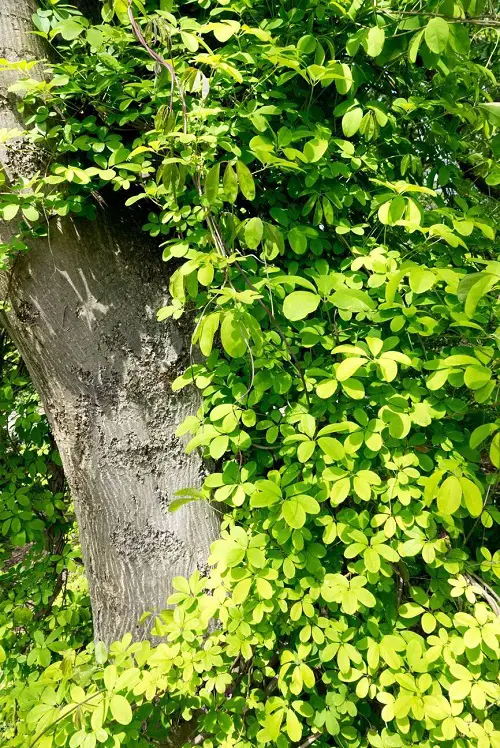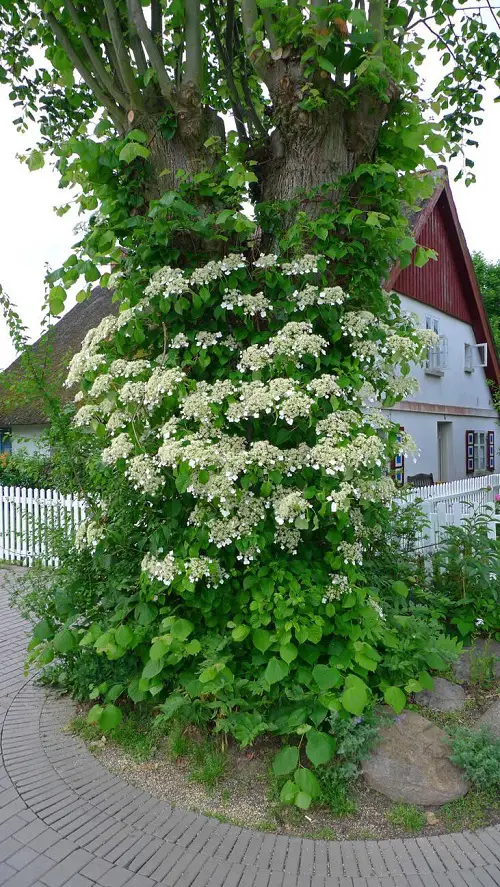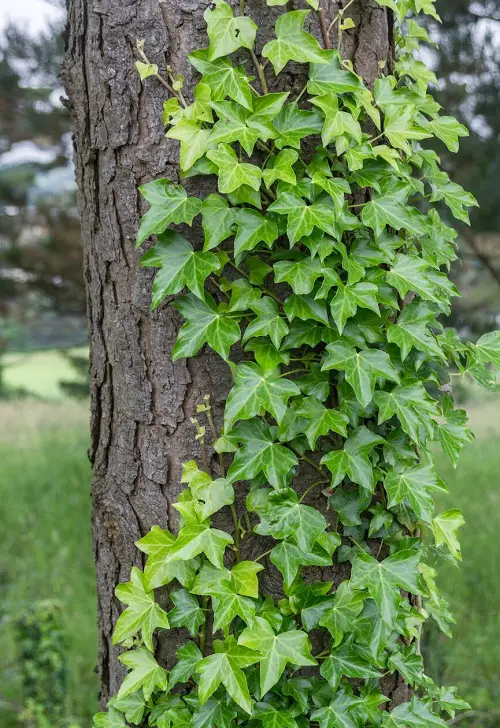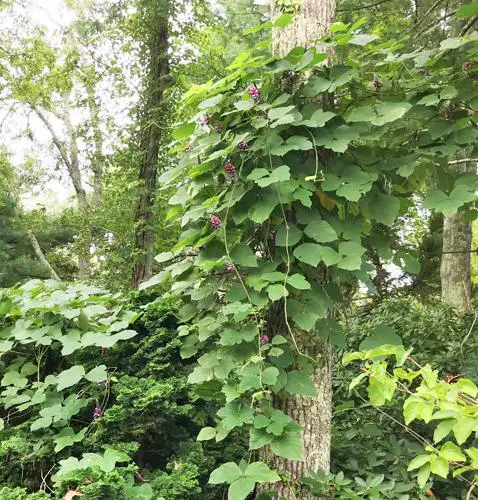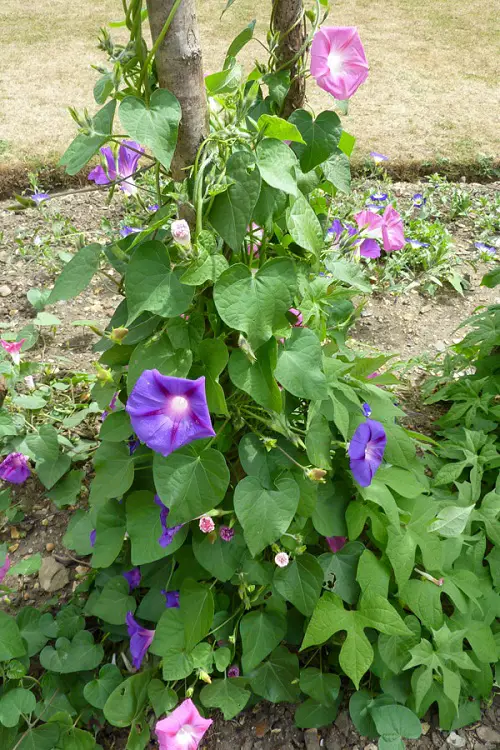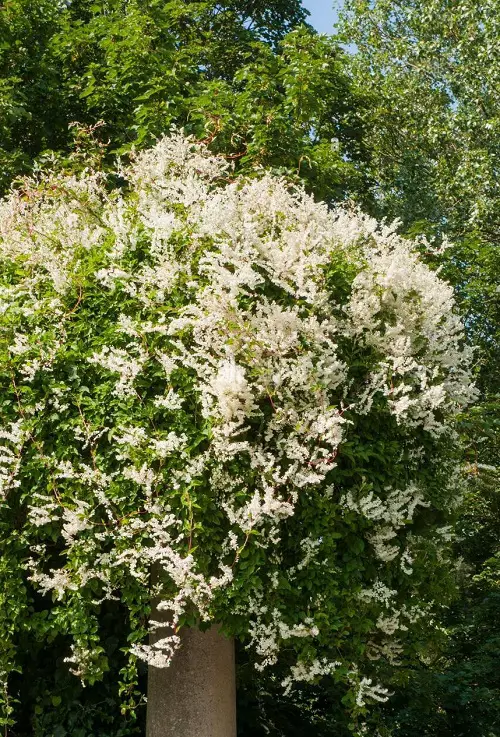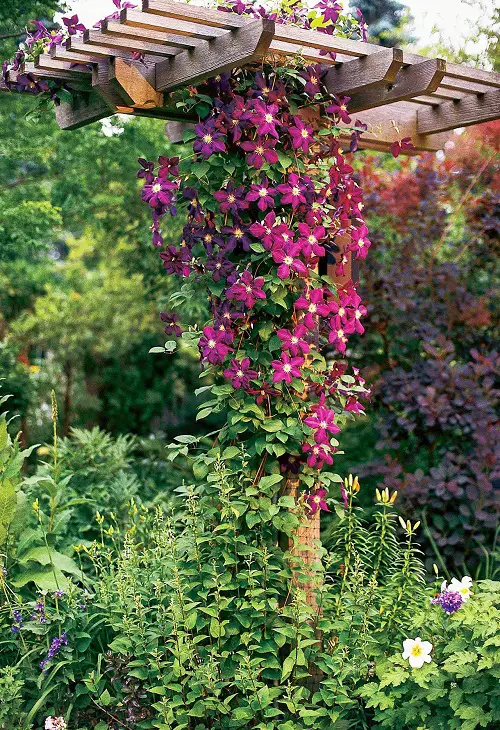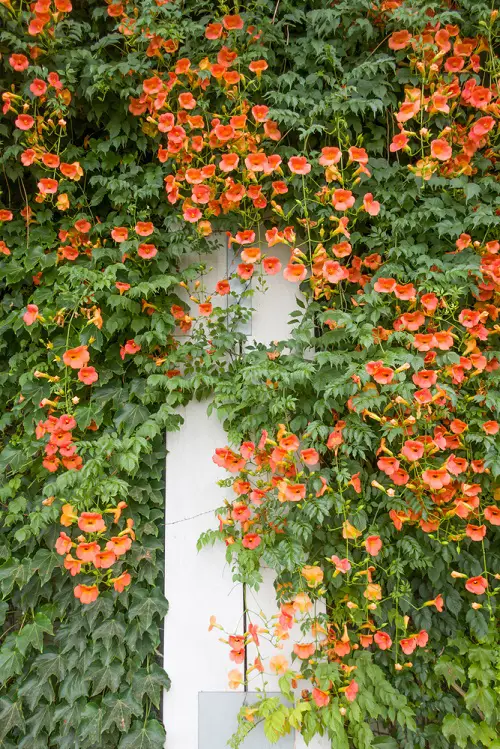Vines That Grow on Trees often seek support from them, and can also sometimes inflict damage. Let’s look at a few examples!
You might have spotted different vines on trees, and must have wondered what sort of plant they are. Well, we will give you the list of the ones that are notorious for this habit!
Vines That Grow on Trees
1. Boston Ivy
Botanical Name: Parthenocissus tricuspidata
Boston ivy climbs trees using small sticky pads at the end of its tendrils. It forms a thick blanket of foliage that turns bright red in fall.
It can potentially block sunlight but is less aggressive than true ivy, which makes them perfect to train on fenses and arbors, where you would like a natural privacy screen.
2. Chocolate Vine
Botanical Name: Akebia quinata
Native to East Asia, these vines that grow on trees are named for their chocolate-scented flowers and edible grape-like fruits. This twining vine climbs trees using tendrils and provides ornamental value with its lush foliage and fragrant blooms.
3. Climbing Hydrangea
Botanical Name: Hydrangea anomala
This woody vine attaches itself to trees and structures using root-like holdfasts along its stems. Climbing hydrangea is generally not aggressive enough to harm trees but may require occasional pruning to control size.
This makes them a perfect pick for trellises or backyard walls, where you would want some privacy.
4. Dutchman’s Pipe
Botanical Name: Aristolochia spp.
Named for the distinctive shape of their flowers, Dutchman’s Pipe vines are known for their unique foliage and curious blooms. These vines climb trees using twining stems and provide habitat for butterflies and other pollinators.
5. English Ivy
Botanical Name: Hedera helix
Varieties of English ivy vines wraps themselves to tree trunks and branches using root-like structures along its stems. While ivy may not directly kill a mature tree, it can increase disease susceptibility and prevent new growth.
These are great to train on possibly every surface you can find!
6. Japanese Honeysuckle
Botanical Name: Lonicera japonica
Japanese honeysuckle is an invasive woody vine that climbs trees in search of sunlight. It can girdle and kill small trees and shrubs by restricting sap flow.
Persistent removal and cutting of vines, at the base, are required to control its aggressive growth.
7. Kudzu
Botanical Name: Pueraria lobata
Kudzu is an extremely fast-growing vine that has earned a reputation in the southeastern U.S. as “the vine that ate the South.” Introduced from Asia, it climbs trees and grows up to a foot per day during summer!
8. Morning Glory
Botanical Name: Ipomoea purpurea
Morning glory vines wrap loosely around tree branches and stems with twining stems. They can grow rapidly in summer, covering trees with heart-shaped leaves and funnel-shaped flowers.
Well, add pole/s in the garden and train these on for a beautiful display of blooms!
9. Moonflower
Botanical Name: Ipomoea alba
Moonflower, a close relative of morning glory, is named for its large, fragrant white flowers that bloom in the evening. This fast-growing vine climbs trees using twining stems and attracts nocturnal pollinators like moths and bats.
10. Passionflower
Botanical Name: Passiflora
Passionflower vines tend to loosely wind around trees and structures using twisting leaf stalks or tendrils. Rapid growth in summer can potentially shade out nearby plants.
They are best reserved for pots, where you can train them on trellis, or moss poles, for a fantastic display of flowers!
11. Silver lace Vine
Botanical Name: Fallopia baldschuanica
Silver lace is an aggressive deciduous woody vine that can grow up to 25 feet in a season! It climbs by twining stems around branches and forms dense mats of leaves and stems that can block sunlight and weigh down trees.
12. Sweet Autumn Clematis
Botanical Name: Clematis terniflora
Sweet autumn clematis is a woody vine that can aggressively climb and blanket trees in a sheet of white flowers in fall. Dense growth can shade and potentially weaken trees.
However, their display of flowers is too stunning to ignore, the reason you must grow it in a controlled manner to add a vivid appeal in the garden!
13. Trumpet Creeper
Botanical Name: Campsis radicans
Trumpet creeper is a perennial flowering vine native to eastern North America. It climbs trees using aerial rootlets but typically does not embed roots into the tree’s bark.
14. Virginia Creeper
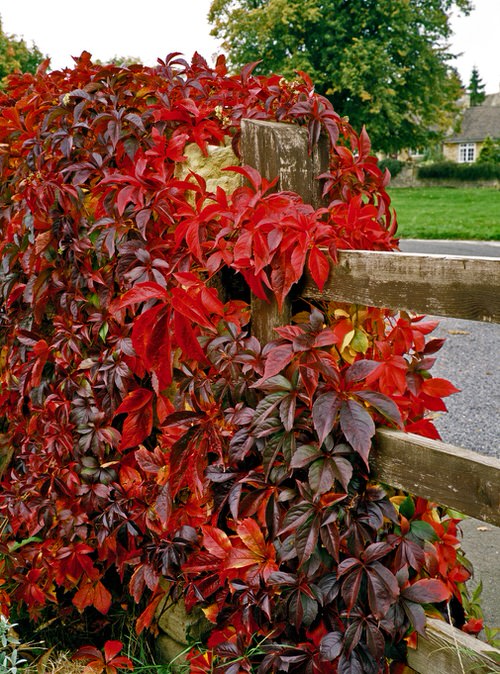
Botanical Name: Parthenocissus quinquefolia
Virginia Creeper, also known as Woodbine, is a deciduous vine native to North America. It uses adhesive pads or tendrils to climb trees. While it doesn’t typically harm them, its dense growth can occasionally compete for resources and light.
15. Yellow Jasmine

Botanical Name: Gelsemium sempervirens
Yellow jasmine is a twining evergreen vine with golden fragrant flowers. It climbs by coiling around branches but usually does not embed roots. It is a great option for sunny areas that you want to get covered with flowers in no time!
16. Flaming Glorybower
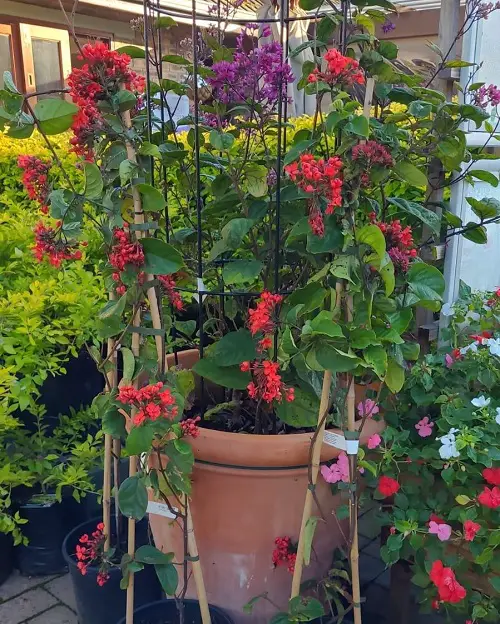
Botanical Name: Clerodendrum splendens
Last on the list of vines that grow on trees, this one has beautiful clusters of red-orange tubular flowers. It climbs trees using twining stems and can reach significant heights.
While it adds an ornamental value to the surroundings, its rapid growth may compete for resources, thus necessitating occasional pruning and management.



